
SDG 11 – Indicator 11.2.1 Public access to buildings
Provide public access to buildings and/or monuments or natural heritage landscapes of cultural significance
Universitas Sriwijaya provides public access to its culturally significant buildings, monuments, and natural heritage landscapes. This initiative demonstrates UNSRI’s commitment to preserving heritage and fostering community engagement.
Taman Pendidikan of Faculty of Teacher Training and Education
The Taman Pendidikan at the Faculty of Teacher Training and Education (FKIP), Universitas Sriwijaya, reflects the traditional architecture and cultural heritage of South Sumatra. This facility serves as a practical space for cultural and educational activities, promoting an appreciation for local traditions. By incorporating cultural values into the learning environment, the Taman Pendidikan supports efforts toward preserving heritage while contributing to sustainable development initiatives. The park is open and accessible for public visit.
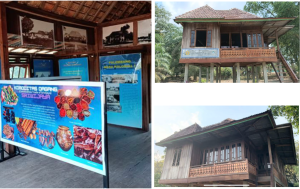
Link:
SDG 12 – Indicator 11.2.2 Public access to libraries
Provide public access to libraries including books and publications
Universitas Sriwijaya ensures public access to its libraries, providing a diverse collection of books and publications to support learning and research for the wider community. This initiative aligns with SDG 11 by promoting inclusive access to knowledge and fostering sustainable, informed communities.
Central Library of Universitas Sriwijaya
The Universitas Sriwijaya library is a resource center accessible to all members of the academic community. It serves as a hub for learning, research, and exploration, offering a wide range of services and collections designed to meet diverse academic and intellectual needs. The library provides various services, including circulation and reference support, access to an online repository for theses and dissertations, the Sampoerna Corner, and complimentary internet access to enhance the research experience.
The collection is equally comprehensive, encompassing both printed and digital materials. It ranges from fiction to scientific resources, e-journals, e-books, and daily publications like newspapers, as well as monthly magazines. These resources ensure that students and faculty have access to the latest knowledge and information in their fields of interest. By following the library’s guidelines and regulations, users can maximize their access to resources, creating a supportive environment for knowledge sharing and academic development at Universitas Sriwijaya.

The Universitas Sriwijaya library plays a vital role in supporting Sustainable Development Goal (SDG) 11: Sustainable Cities and Communities by fostering access to knowledge and promoting sustainable education practices. Through its Online Public Access Catalog (OPAC), the library provides an efficient platform for users to search and access physical and digital resources, making academic materials more accessible to the entire university community. To ensure inclusivity and sustainability in education, the library offers access to an extensive range of e-journals and online databases from globally recognized publishers, including Oxford Academic, Taylor & Francis, ScienceDirect, Wiley, IEEE, Emerald Insight, Springer, and Elsevier. These resources enable students and researchers to engage with the latest advancements in science, technology, and social studies, aligning with the goal of building sustainable and informed communities. The library’s online repository also contributes to SDG 11 by preserving the intellectual output of Universitas Sriwijaya through theses, dissertations, and other academic works. This repository not only supports the university’s efforts in sustainable knowledge sharing but also facilitates research that can address urban challenges and promote resilience in communities.
Links:
- Online Public Access Catalog (OPAC) of Universitas Sriwijaya – Homepage
- Portal of Journal Collections of Universitas Sriwijaya
- Repository of Universitas Sriwijaya Publications
- Online Database of Subscribed International Journal Publishers
- Online Database of Open-Access Publications (Journals and Books)
SDG 11 – Indicator 11.2.3 Public access to museums
Provide public access to museums, exhibition spaces or galleries, or works of art and artefacts
Universitas Sriwijaya is committed to offering public access to museums, galleries, and exhibitions showcasing works of art and artifacts. This effort aligns with SDG 11 by promoting cultural preservation, fostering inclusivity, and supporting sustainable communities through access to cultural heritage.
The gallery at *Taman Pendidikan*, located within the Faculty of Teacher Training and Education (FKIP) at Universitas Sriwijaya, invites visitors to explore the rich history and culture of Palembang and the ancient Sriwijaya Kingdom. Set within a space dedicated to the arts and cultural heritage, the gallery offers a glimpse into the city’s transformation from a bustling trading hub to a center of cultural and educational significance. Exhibits highlight key moments in Palembang’s history, showcase the economic power of the Sriwijaya Kingdom through its trade commodities, and feature photographs of historical landmarks that reflect the region’s architectural evolution.
The gallery serves as an educational resource, providing students and visitors with an engaging way to learn about local history and culture through interactive displays and curated programs. It plays an important role in preserving and promoting the cultural heritage of South Sumatra, fostering collaboration between historians, educators, and the local community. By connecting the past to the present, the gallery also supports Sustainable Development Goal 11, emphasizing the importance of heritage in building sustainable and inclusive communities.
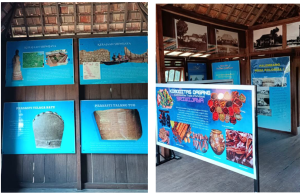
SDG 11 – Indicator 11.2.4 Public access to green spaces
Provide free public access to open spaces and green spaces
Universitas Sriwijaya as a Green Campus
Universitas Sriwijaya ensures free public access to its open and green spaces, creating opportunities for community interaction and environmental appreciation. This initiative aligns with SDG 11 by supporting sustainable urban development and improving quality of life through inclusive and accessible natural areas. The Universitas Sriwijaya campus spans an expansive area of approximately 7,241,059 m², embodying its vision to become a Green-Argo-Eco-Edu-Tourism Campus. This commitment is reflected in the university’s sustainable management of its natural environment. A significant portion of the campus, 2,228,520 m² (32% of the total area), is preserved as natural forest, serving as a vital ecological asset that supports biodiversity, regulates the microclimate, and acts as a carbon sink. In addition to conserving natural forests, Universitas Sriwijaya has dedicated 1,405,310 m² (19% of the total area) for tree planting initiatives, including fruit-bearing trees. These efforts contribute to the campus’s ecological sustainability by improving air quality, enhancing green coverage, and providing a model for sustainable land use. The cultivation of fruit trees also supports food sustainability and fosters a connection between the campus community and nature.
These initiatives directly align with Sustainable Development Goal (SDG) 11: Sustainable Cities and Communities, which emphasizes the importance of creating inclusive, safe, resilient, and sustainable urban spaces. By integrating environmental conservation with educational and recreational opportunities, Universitas Sriwijaya not only supports ecological balance but also inspires students, staff, and visitors to adopt sustainable practices. Furthermore, these green spaces serve as living laboratories, offering students and researchers opportunities for hands-on learning about environmental management, agroforestry, and biodiversity conservation. This integrated approach highlights the university’s role in fostering sustainability while enhancing the quality of life for its academic community and surrounding areas. Through these actions, Universitas Sriwijaya demonstrates its leadership in building sustainable communities and advancing SDG 11.
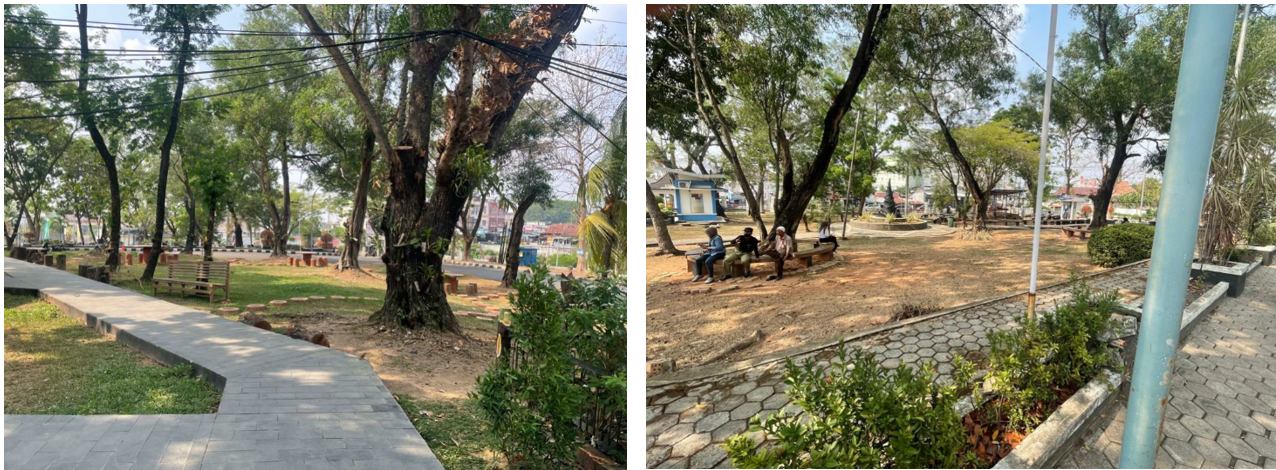
Taman Firdaus of Universitas Sriwijaya
Taman Firdaus represents Universitas Sriwijaya’s commitment to implementing its “Green Campus” program, which was initiated in 2021 and has since entered the planning and development phase. As part of this initiative, approximately 70 hectares of land within the Unsri campus complex in Indralaya, Ogan Ilir, have been designated for the project. To support the program’s objectives, a tree-planting campaign is underway, involving the cultivation of 2,500 seedlings at the UNSRI Camping Ground.
An additional feature of Taman Firdaus is its accessibility. The park is open to visitors free of charge, reflecting its role as a community-oriented green space. However, visitors are required to obtain prior permission from campus officials to ensure proper management and maintenance of the facility. This initiative aligns with the university’s broader goals of environmental conservation, education, and sustainable campus development.
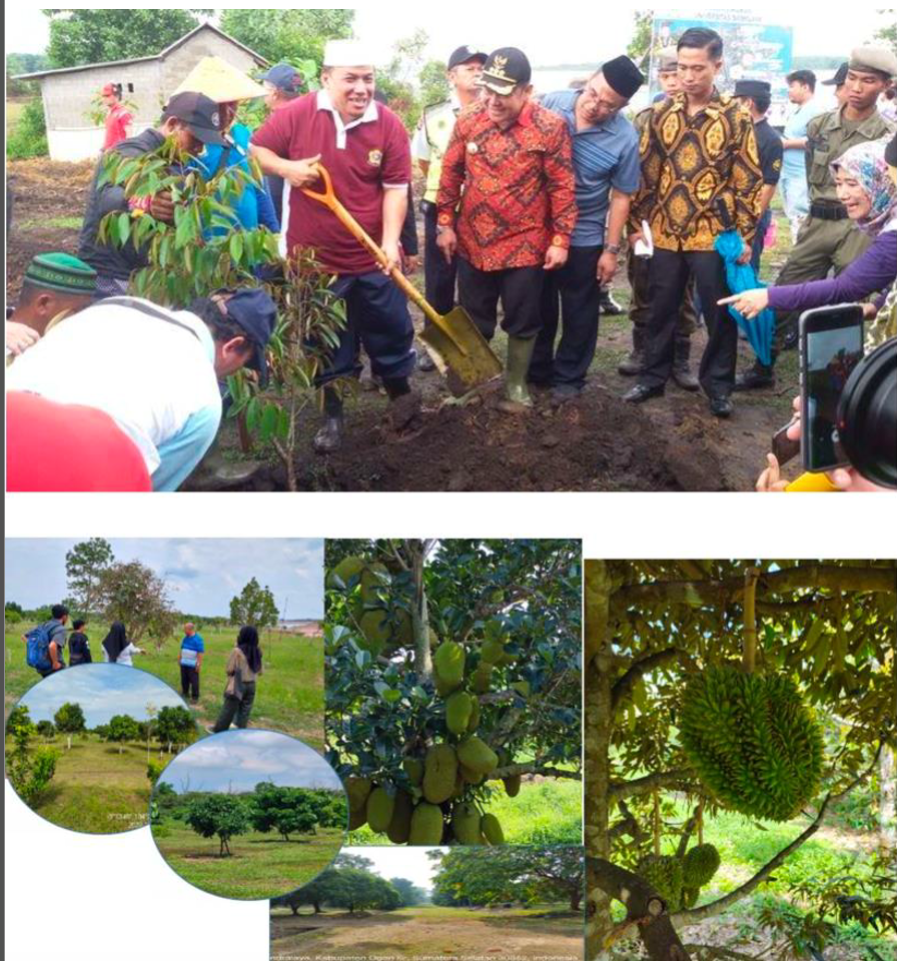
Arboretum of Universitas Sriwijaya
The natural forest area includes an arboretum spanning approximately 5 hectares, established in 2007 with support from the South Sumatra Forest Fire Management Project (SSFFMP). This initiative was part of a technical cooperation project jointly funded by the European Commission and the Government of Indonesia through the Ministry of Forestry. During the development of the arboretum, invasive Acacia mangium seedlings were manually removed, either by pulling them out or cutting them at the soil surface. For larger trees that could not be removed physically, a ring-barking or girdling technique was applied, involving the removal of a 25–30 cm wide ring of bark. Native tree species were preserved and left undisturbed, including significant species such as Alstonia scholaris, Peronema canescens, Schima wallichii, Fagraea fragrans, Melaleuca leucadendra, and Parkia speciosa.
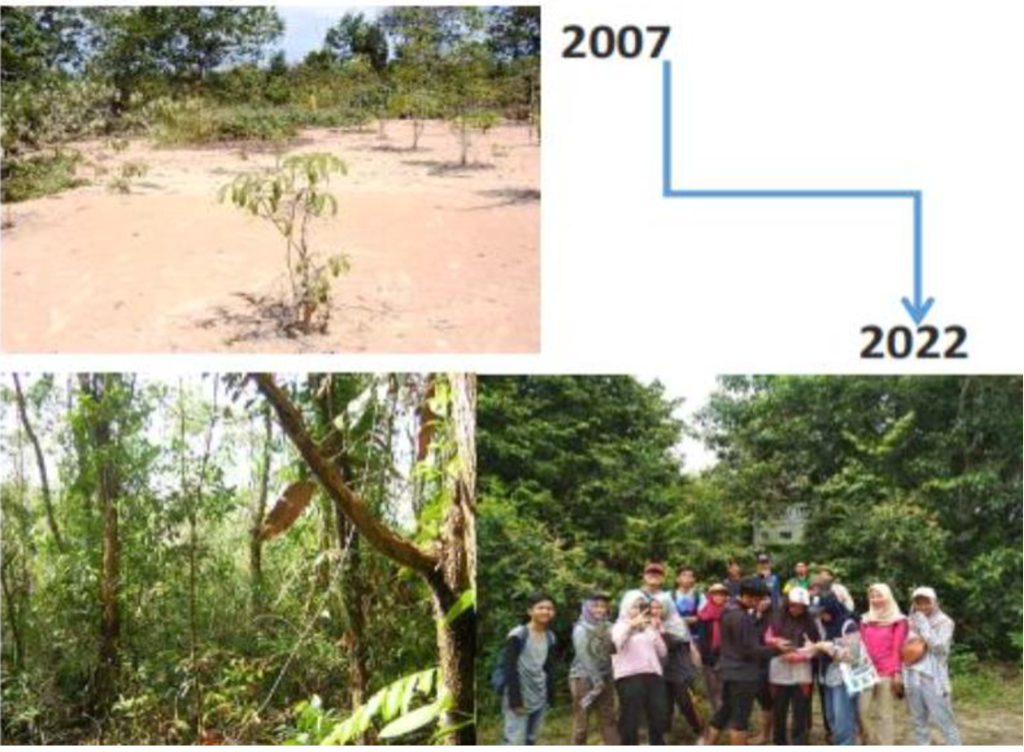
Link:
SDG 11 – Indicator 11.2.5 Arts and heritage contribution
Contribute to local arts, in terms of number of annual public performances of university choirs, theatre groups, etc.
Universitas Sriwijaya plays an essential role in promoting the arts and preserving cultural heritage as part of its commitment to Sustainable Development Goal (SDG) 11: Sustainable Cities and Communities. Through regular public performances by its choirs, theater groups, and other artistic ensembles, the university enhances cultural vibrancy and fosters inclusive community participation in the arts.
Universitas Sriwijaya actively supports the development of arts and culture through various student communities and performance groups, particularly in music and theater. One of the prominent student activity units is Teater GABI ’91, established on October 21, 1991, by students of the Indonesian Language and Literature Education Program. Teater GABI ’91 has participated in numerous national arts events, such as the Pekan Seni Mahasiswa Nasional (PEKSIMINAS). In 2023, Teater GABI ’91 frequently organized various events, including webinars, performances, and other activities. One notable event, GABI EXPO 6, organized by Teater GABI ’91 at Universitas Sriwijaya, took place from November 1 to 3, 2023, under the theme “Panggung Masa Lalu Bumi Sriwijaya” (Stage of the Past Sriwijaya Land). This event featured theatrical competitions and workshops, bringing together six theater groups from high schools and independent communities across South Sumatra. Aimed at revitalizing and preserving the region’s cultural arts, particularly theater, the expo served as a platform for creative expression and skill development, inspiring creativity among youth.
Universitas Sriwijaya also has several other student activity units in the arts, such as Belisario Choir. In 2024, Belisario Choir achieved success once again at the 13th Bali International Choir Festival (BICF), held from July 23 to 27 in Bali. Additionally, UNSRI has UKM Harmoni, which serves as a platform for students to develop their talents and skills in drama, dance, music, and other visual arts.
Links:
- Official Instagram Page of Teater Gabi
- Official YouTube Page of Teater Gabi
- Official Instagram Page of Belisario UNSRI
- Official YouTube Page of UKM Harmoni
SDG 11 – Indicator 11.2.6 Record and preserve cultural heritage
Deliver projects to record and preserve intangible cultural heritage such as local folklore, traditions, language, and knowledge. This can include the heritage of displaced communities.
Universitas Sriwijaya is dedicated to preserving and documenting the rich cultural heritage of South Sumatra and its surroundings, in alignment with Sustainable Development Goal (SDG) 11: Sustainable Cities and Communities. Through various initiatives, the university actively records and safeguards intangible cultural heritage, including local folklore, traditions, languages, and traditional knowledge systems.
In 2023, one notable initiative was the Eksplorasi Peradaban Sriwijaya (Sriwijaya Civilization Exploration), which involved academics, students, and cultural practitioners from South Sumatra. The program also welcomed students from other universities as part of the Modul Nusantara program. The activities focused on introducing and preserving Palembang’s cultural heritage, such as wedding customs, traditional dances, oral literature, Dulmuluk theater, and noble titles. Participants also visited cultural and historical sites in Palembang, including Rumah Tjik Mas in Kampung Khas Palembang, Klenteng Ho Tjing Bio on Kemaro Island, and the house of merchant Hong Boe Tjit in Kampung 4 Ulu.
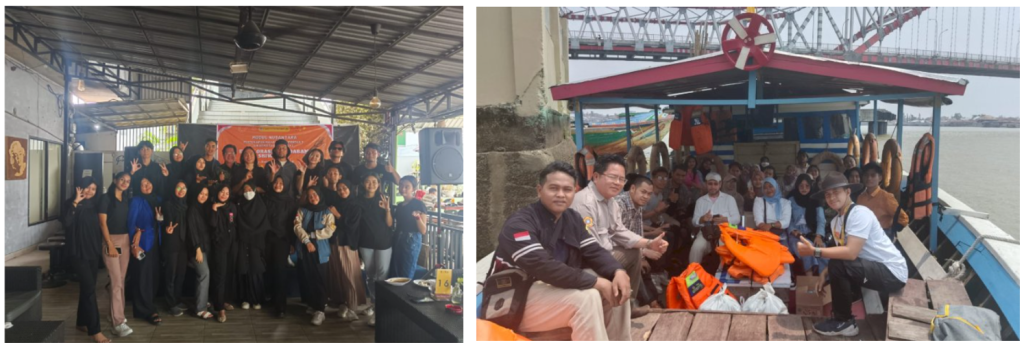
In addition to its programs, Universitas Sriwijaya contributes to cultural preservation through research conducted by its faculty and students. These research efforts focus on documenting and analyzing various initiatives aimed at preserving cultural heritage, ensuring that traditional practices and knowledge are systematically recorded and remain accessible for future generations.
Links:
- Modul Nusantara Program #1
- Modul Nusantara Program #2
- Digitization of Historical Buildings in Kampung Al-Munawar as an Effort to Preserve the Old Village in Palembang
- The Potential of Religious Tourism at Ki Marogan’s Tomb as an Effort to Preserve Local Wisdom in Palembang City
- Development and Preservation of Ka Ga Nga Script through the Traditional Deliberation Council in Rejang Lebong Regency, Bengkulu Province
